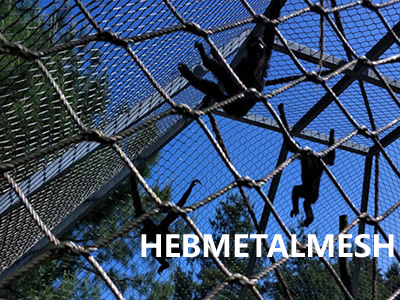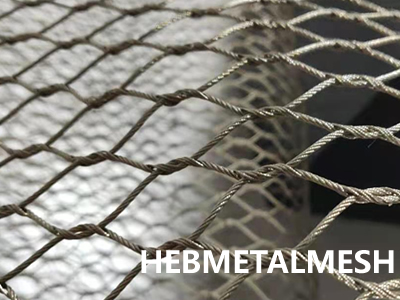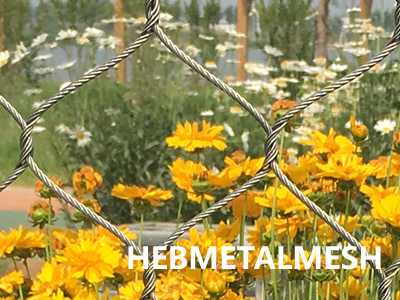Secure Zoo Enclosures: Top Barriers for Animal Safety (and Your Enjoyment!)
Imagine peering into a crystal-clear enclosure, watching a majestic lion stalk its prey across a simulated African savanna. Or maybe you envision yourself getting nose-to-nose with a playful chimpanzee through a sturdy mesh barrier. Zoos offer incredible opportunities to connect with the animal kingdom, but safety is paramount – for both the animals and the visitors.
That’s where zoo enclosure barriers come in. These specialized barriers play a critical role in creating secure environments for animals while allowing visitors to have an enriching and enjoyable experience. But with so many options available, choosing the right zoo enclosure barrier can feel overwhelming. Fear not, fellow zoo enthusiast! This guide will equip you with the knowledge to navigate the world of zoo enclosure barriers.
We’ll delve into the different types of barriers, from the strength and security of mesh to the immersive experience offered by glass. We’ll explore the key considerations when selecting the perfect material for your specific needs, ensuring both animal welfare and optimal visitor enjoyment. Buckle up, because we’re about to embark on a journey to create the ultimate secure zoo enclosure!
Hebmetalmesh is a professional zoo mesh wire fence factory with 30 years history in the field. A better stainless steel rope mesh products is an idea to choose for zoo enclosure barries when rebuilding or new animal enclosures.

Exploring the Diverse World of Zoo Enclosure Barriers
Not all zoo enclosures are created equal! The ideal barrier for a towering giraffe exhibit will differ vastly from the one needed for a mischievous troop of monkeys. Let’s explore the three main types of zoo enclosure barriers, each with its own set of pros and cons:
1. Mesh Barriers:
Imagine a sturdy metal mesh, offering a clear view of the animals while providing a secure barrier. This is the workhorse of the zoo enclosure world, favored for its:
- Strength and Durability: Mesh can withstand significant force, making it ideal for containing larger animals.
- Affordability: Compared to other options, mesh offers a cost-effective solution.
- Versatility: Mesh comes in various thicknesses and configurations, adaptable to diverse animal species and exhibit designs.
However, mesh barriers do have a drawback: Visibility. While some animals like tigers or zebras might not be too bothered by a mesh barrier, it can create a slight visual obstruction for smaller primates or birds.
2. Glass Barriers:
Ever dreamt of feeling like you’re practically stepping into a lion’s den? Glass barriers offer an unparalleled immersive experience, allowing visitors to get up close and personal with the animals. Here’s what makes them stand out:
- Unmatched Clarity: Glass provides unobstructed views, creating a feeling of being right there in the animal’s habitat.
- Aesthetics: Glass barriers offer a sleek and modern look, enhancing the overall design of the zoo exhibit.
But like all things luxurious, glass comes at a price. Here are some things to consider:
- Cost: Glass barriers are significantly more expensive than mesh.
- Maintenance: Glass requires regular cleaning to maintain optimal clarity.
- Safety Concerns: While specially designed zoo-grade glass is incredibly strong, proper installation and maintenance are crucial for ultimate safety.
3. Natural Barriers:
Imagine a majestic Bengal tiger prowling around an enclosure with a moat separating it from the viewing area. Natural barriers, like moats, rocks, and vegetation, create a visually stunning and immersive experience while promoting animal welfare.
Here’s what makes them unique:
- Animal Welfare: Natural barriers can mimic an animal’s natural habitat, reducing stress and encouraging natural behaviors.
- Aesthetics: They create a more naturalistic environment, blurring the lines between the zoo enclosure and the animal’s wild home.
However, natural barriers might not be suitable for all situations. Here are some limitations:
- Limited Application: Not all animals can be safely contained with natural barriers alone.
- Space Requirements: Creating effective natural barriers often requires a significant amount of space.
- Maintenance: Maintaining moats and vegetation requires ongoing effort.
Zoo animal barrier is stainless steel material fence, hand weaving process, 30 years product life products. It has flexible sheet size, same fire price with different customized panels.

Choosing the Right Material for Your Zoo Enclosure Barrier: A Balancing Act
Now that you’ve explored the diverse world of zoo enclosure barriers, it’s time to delve into the exciting – and sometimes challenging – task of selecting the perfect material for your specific needs. Here are some key considerations to keep in mind:
1. Strength and Durability: This is paramount. The barrier needs to withstand the size and strength of the animals it’s containing. Welded mesh is a great choice for large animals like lions and tigers, while acrylic might be suitable for smaller primates.
2. Unrestricted Views: Striking a balance between security and visitor experience is crucial. Consider options like clear mesh or strategically placed glass panels to ensure optimal views without compromising animal safety.
3. Safety: Always prioritize the safety of both animals and visitors. Choose materials that are non-toxic, have smooth surfaces to prevent injuries, and are strong enough to withstand potential impact.
4. Weather Resistance: Zoo enclosures are exposed to the elements year-round. Opt for materials that can withstand harsh weather conditions, like rain, snow, and extreme temperatures. Laminated glass is a good example, offering excellent weather resistance.
5. Aesthetics: The barrier should complement the overall design of the zoo exhibit and create a visually appealing environment. Consider materials that blend seamlessly with the surrounding landscape, like natural rock for a desert exhibit.
Beyond Materials: Choosing the Right Partner
Selecting the right material is just one piece of the puzzle. Partnering with a reputable company specializing in zoo enclosure barriers is crucial. Look for a company with experience in designing, manufacturing, and installing high-quality barriers that meet all safety regulations and animal welfare standards.
Remember: The ideal zoo enclosure barrier is a carefully considered combination of material, design, and expert installation. By prioritizing both animal safety and visitor enjoyment, you can create a world-class zoo exhibit that fosters wonder and appreciation for the animal kingdom.
We provide high quality, fast delivery and a lot of spot can be choose. Small samples can let you see in hand before place an order.

Securing Your Dreamscape: Best Practices for Zoo Enclosure Barrier Installation
Imagine the thrill of watching a playful orangutan swing through a lush rainforest enclosure, separated from you only by a securely installed barrier. Proper installation is the invisible hero, ensuring the effectiveness and longevity of your chosen zoo enclosure barrier. Here’s a glimpse into the key steps involved:
1. Site Preparation: A sturdy foundation is essential for a secure enclosure. This involves meticulous site preparation, ensuring the ground is level and stable to support the weight of the barrier and potential animal impact.
2. Post Installation: Think of the posts as the backbone of the barrier. They need to be securely anchored into the ground using appropriate anchoring methods based on the chosen material and soil conditions.
3. Panel Attachment: Once the posts are securely in place, it’s time to connect the barrier panels. This involves using the appropriate fasteners to create a seamless and secure connection. Welding or seaming might be required for mesh barriers to ensure structural integrity.
4. Quality Control Checks: Safety is paramount. Rigorous quality control checks are conducted throughout the installation process to ensure all components are securely fastened, and the entire barrier meets the required structural integrity standards.
Beyond Installation: A Commitment to Excellence
While proper installation is crucial, the story doesn’t end there. Here are some additional considerations for long-term success:
- Maintenance Plan: Regular inspections and maintenance are essential to ensure the continued effectiveness of the barrier. This might involve checking for any wear and tear, loose fasteners, or potential rust (for metal barriers).
- Compliance with Regulations: Zoo enclosure barriers need to comply with local and national animal welfare standards. Partnering with a company that understands these regulations ensures your chosen barrier meets all ethical animal housing requirements.
By prioritizing a meticulous installation process, regular maintenance, and adherence to regulations, you’re not just securing the enclosure; you’re creating a safe and enriching environment for the animals and a truly unforgettable experience for your zoo visitors.
The Power of Secure Zoo Enclosure Barriers: A Boon for Animals and Visitors
High-quality zoo enclosure barriers are more than just physical dividers; they represent a commitment to animal welfare and a dedication to creating a captivating experience for visitors. Here’s how these secure barriers create a win-win situation for everyone involved:
1. Enhanced Animal Safety: Secure enclosures are the cornerstone of animal welfare in zoos. Strong barriers prevent escapes, minimizing the risk of injuries for both animals and visitors. This allows animals to live in a stress-free environment, promoting natural behaviors and overall well-being.
2. Public Safety: Secure barriers ensure the safety of zoo visitors, especially children who might be more curious and prone to getting too close to the animals. Knowing a sturdy barrier separates them from potentially dangerous animals allows visitors to relax and fully enjoy the zoo experience.
3. Improved Animal Welfare: Beyond preventing escapes, secure enclosures can contribute to improved animal welfare in several ways. Properly designed barriers can provide opportunities for enrichment, like climbing structures for primates or hiding spots for shy animals. Additionally, secure enclosures can minimize stress caused by excessive noise or crowds from visitors, mimicking a more natural environment.
4. Elevated Visitor Experience: Clear and unobstructed views are crucial for a captivating visitor experience. Modern zoo enclosure barriers, like strategically placed glass panels or clear mesh, allow visitors to observe animals in their natural behaviors without compromising safety. This fosters a sense of connection with the animal kingdom and creates lasting memories.
5. Aesthetic Appeal: Secure barriers don’t have to be an eyesore. Modern materials and design techniques allow for aesthetically pleasing enclosures that seamlessly blend with the surrounding landscape. Imagine a naturalistic rock wall separating a tiger exhibit or a lushly planted moat surrounding a primate enclosure. These visually appealing barriers enhance the overall ambiance of the zoo, making the experience even more enjoyable.
Investing in the Future: High-quality zoo enclosure barriers are an investment in the future. They ensure the safety of animals and visitors, promote ethical animal housing practices, and create a captivating zoo experience for generations to come. By prioritizing secure enclosures, zoos can showcase their commitment to animal welfare and conservation, leaving a lasting positive impact on both the animals and the communities they serve.
Frequently Asked Questions (FAQ) About Zoo Enclosure Barriers
Here are some of the most commonly asked questions regarding zoo enclosure barriers:
The frequency of inspections for zoo enclosure barriers depends on the material and specific design. However, most reputable companies recommend inspections at least twice a year, with additional checks after severe weather events.
Any damage to a zoo enclosure barrier, no matter how minor it may seem, should be addressed immediately. Depending on the severity of the damage, repairs might be possible, or a complete barrier replacement might be necessary.
Absolutely! Some companies offer eco-friendly materials for zoo enclosure barriers, such as recycled plastic composites or sustainably sourced wood. Additionally, natural barriers like strategically placed rocks and vegetation can be incorporated into enclosure design for a more sustainable approach.
Reputable companies specializing in zoo enclosure barriers typically offer detailed information about the materials they use on their websites. Additionally, industry associations and zoological organizations might provide resources and guidelines regarding zoo enclosure design and barrier selection.
The cost of zoo enclosure barriers can vary greatly depending on the chosen material, size of the enclosure, and complexity of the design. Mesh barriers tend to be the most cost-effective option, while glass barriers are typically the most expensive.
Remember: When budgeting for zoo enclosure barriers, consider the long-term value. Opting for high-quality, durable materials might involve a higher initial investment but can save money in the long run by requiring less maintenance and replacement.
Conclusion: Building a Sanctuary of Safety and Wonder
Zoo enclosure barriers play a critical role in creating a harmonious environment where animal welfare meets visitor enjoyment. By understanding the different barrier types, carefully selecting the right material, and prioritizing proper installation, you can ensure the safety of both animals and visitors.
Ultimately, high-quality zoo enclosure barriers are more than just physical structures; they represent a commitment to creating a sanctuary for animals and fostering a sense of wonder for visitors. They allow us to observe the majesty of the animal kingdom from a safe distance and ignite a passion for conservation.
Ready to embark on your zoo enclosure barrier journey? Consider partnering with a reputable company specializing in zoo enclosure design and installation. Their expertise can guide you through the process, ensuring you select the perfect barrier solution that meets your specific needs and budget.
Together, we can create secure and enriching environments for animals, while fostering unforgettable experiences for zoo visitors, leaving a lasting positive impact on the world around us.

